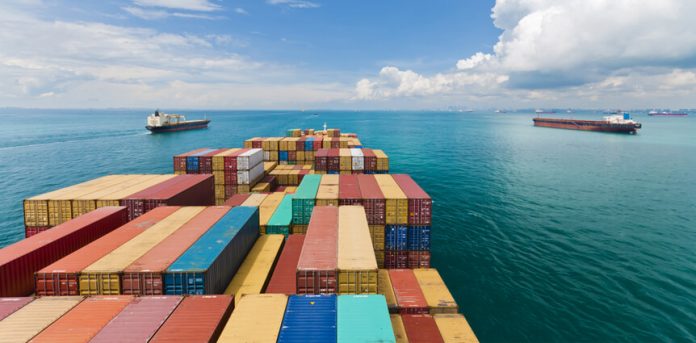This article is written by Harshit Bhimrajka, from Rajiv Gandhi National University of Law, Patiala. This is an exhaustive article which talks about maritime boundaries and security concerns and disputes in the Indian ocean region.
Table of Contents
Introduction
The Indian Ocean Region is the third largest of the world’s oceanic regions. It has a very complex environment in which four continents border and various countries operate. The maritime security of the region is an extremely broad area of concern as it covers everything like piracy & armed robbery, terrorism, illicit trafficking, the security of energy resources, and the physical security of ports & ships. Maritime boundaries and disputes exist within the Indian Ocean region, and it creates a situation of conflict between nations in rightfully identifying their territory. The major players of the region are India, China, and the USA. There are multiple sources of insecurity afflicts various nations that rim the Indian Ocean region and these include terrorism in Srilanka, Pakistan, Saudi Arabia, and India; simmering conflicts between Persian Gulf states; high volume trafficking of drugs from Afghanistan; insurgency in Iraq and Yemen; and piracy. The primary and principal maritime security challenges in the region include maritime borders/disputes, asymmetric threats, organized crimes, and energy & mineral resources security.
Maritime boundary
A maritime boundary is a conceptual division using geopolitical or physiographic criteria of the water surface. The main aim of the division is to bound the areas of exclusive natural rights over mineral and biological resources. They usually serve to identify the edge of international waters. It exists in the context of inland waters, territorial waters, contiguous zones, exclusive economic zones, the continental shelf, the high seas, and the Area which are recognized by the United Nations Convention on the Law of the Sea. The delineation of the boundaries has economic, strategic, and environmental implications. The limits of the maritime boundaries are expressed in polygon layers of control and sovereignty calculated from the declaration of a baseline and the conditions under which a nation may establish baselines are inscribed in the UN Convention on the Law of the Sea (hereinafter UNCLOS). It can be a straight baseline, a low baseline or a combination of both.
The zone of the boundaries are expressed in concentric limits and the breadth is measured from the baseline in accordance with the UNCLOS rules:
- Inland waters are the waters on the landward side of the baseline. It includes rivers, bays, and lakes connected to the sea.
- Territorial sea extends up to twelve nautical miles from the state’s baselines. The state exercises sovereignty over its territorial sea like the seabed, the airspace above it, and the subsoil beneath.
- Contiguous Zones are adjacent or beyond the territorial sea as claimed by the state and it extends up to twenty-four nautical miles from the baselines. The state can control its contiguous zone to prevent the infringement of its customs, immigration, fiscal or sanitary laws and regulations and also punish infringement of those laws and regulations committed within its territory.
- Exclusive Economic Zone- The zone beyond and adjacent to the territorial zone as claimed by the state which can extend up to two hundred nautical miles from the baselines. A state has the sovereignty rights within the exclusive economic zone, it can explore, exploit, conserve, and manage natural resources. It also has rights to other activities for the economic exploitation and exploration like production of energy from the water, winds, and current. The state has the jurisdiction as provided for in international law with regard to the establishment, use of artificial islands, installations, structures, marine scientific research, the protection and preservation of the marine environment, and other rights and duties provided for under international law.
- Continental Shelf is comprised of the subsoil and seabed of the submarine areas that extend beyond the state’s territorial sea throughout the natural prolongation of its territory to the outer edge of the continental margin, or to a length of two-hundred nautical miles from the baseline where the outer edge of the continental margin does not extend up to that length.
Disputes regarding maritime boundaries tend to encompass two dimensions that are territorial sovereignty, which is a legacy of history and jurisdiction rights, and interest in maritime boundaries, which arises because of different interpretations of the law of the sea.
Indian Ocean
Importance
The region of the Indian Ocean is extended up to 70,560,000 km^2 or 19.8 per cent of the water on the surface of the earth (one-fifth of the world’s total ocean area). It is the third-largest ocean bounded by Asia, Africa, Antarctica, and Australia. It has a vast amount of energy and mineral resources and is a great hotspot for fishing (which is considered as the staple food for the population of many countries). It provides critical sea trade routes that connect Africa, South Asia, and the Middle East. A huge number of the world’s most important strategic chokepoints, including Malacca and Straits of Hormuz through which approximately 32.22 million barrels of crude oil and petroleum are transported per day. The Indian Ocean itself is rich with energy and natural resources, for instance, more than half of the world’s maritime oil trade is found in the Indian Ocean region, and around forty per cent of the world’s offshore petroleum is produced in that region. China, India, and Japan are dependent on the energy resources transported via the Indian Ocean region to fuel their economies. India imports approximately eighty per cent of the energy resources from the Middle East, and China imports around seventy-eight per cent of the energy resources like oil and natural gas through the Strait of Malacca from the Indian Ocean. Australia has a modern naval force operating in the Indian Ocean region and it is increasingly featured in national security and maritime strategies in Canberra.
Concerns and disputes in the region
There are many security concerns and disputes in the Indian Ocean region such as piracy and armed robbery, illicit trafficking that includes narcotics, small arms and light weapons, and human trafficking, terrorist threat, and India China dispute in the region.
-
Piracy and armed robbery in the Indian Ocean region
Concern related to piracy and armed robbery has continued in the region for a very long time. According to a report, approximately 214 vessels had been attacked and around thirty-one vessels were hijacked with a fourteen percent success rate in which around four hundred ninety-seven seafarers had been held captive at the end of 2011. These attack groups are well-armed and highly motivated by the prospect of demanding large ransoms. During 2011 around 28 states together started a counter-piracy operation and deployed 35-45 warships and auxiliaries. The three dedicated counter-piracy coalition forces were- NATO’s Standing Naval Maritime Group, EU Naval Force, and Combined Task Force 151. According to a report by Oceans Beyond Piracy, in 2014 the economic cost of piracy off the Somali Coast amounted to $2.3 billion.
-
India-China dispute
China has expanded his presence in the Indian Ocean region which has heightened India’s concerns. Chinese argue that their activity in the region is commercially motivated with the intention to protect its interest and people abroad. An independent think tank, Chellaney of the Center for Policy Research, argues a ramped-up Chinese presence in the Indian Ocean region and elsewhere is consistent with their intention of making maritime power central to achieve their dominance in Asia. China has deployed a huge number of naval forces to support counter-piracy operations in the western Indian Ocean region and invests and sells arms to India’s neighbours. The main aim of China is to take hold of economic and investment projects with Indian Ocean nations to secure ports where its military forces could set up naval facilities. India had increased diplomatic, security, and economic ties with Indian Ocean Region maritime states as a means to strengthen India’s economy and for regional growth, and simultaneously diminish the growing appeal of China. India has spent billions to build up its navy, military bases, modernized fleets and equipment, and the expansion of security ties. It has sent vessels to visit the South China Sea and called for freedom of navigation and peaceful resolution of territorial disputes as part of its Act East Policy. Daniel S. Markey cautions that maritime competition between China and India is still nascent and should not be overblown.
-
Illicit trafficking
Indian Ocean region is the hotspot for the activities like trafficking of narcotics, weapons, and humans. The smuggling of charcoal, cigarettes, khats, endangered species and other contraband is also commonplace in the region. The flow of narcotic drugs- heroin, amphetamine, and cannabis happen from Afghanistan to Europe via Arabian countries and via the Arabian Sea/Suez Canal/Red Sea shipping route. The flow of illicit weapons moves from the area with a surplus region to the area of conflicts. The most concerned are flows of small arms and light weapons from Iran to Yemen and between Yemen and Somalia. There are numerous source countries for illicitly trafficked people in the Indian Ocean region and the flow moves from the Asian subcontinent to the eastern Arabian Peninsula and from the Southern Red sea to the southern Arabian Peninsula. Countries like Somalia, Yemen, Saudi Arabia, Eritrea, Afghanistan, Sudan are most linked with illicit people trafficking.
-
Katchatheevu Island dispute
India and Srilanka have a long-standing dispute concerning the maritime boundary and claim of Katchatheevu island. This island is strategically important for fishing activities and covers 285 acres of land. In 1974, Indira Gandhi and Srimavo Bandaranaike settled the maritime boundary dispute and the island was ceded to Sri Lanka. The agreement did not specify fishing rights in the area allowing both nation’s fishermen to fish around the island. In 1976 another agreement was finalized restricting both the nation’s fishermen from fishing in the other’s waters. In 1991, Tamil Nadu Assembly adopted a resolution for the retrieval of the island. In 2014 the central government informed the Madras HC that sovereignty over Katchatheevu island is settled and fishermen from India do not enjoy the rights to engage in the fishing activities in the region. The Sri Lankan government has stated that the Indian fishermen may be shot if they intrude into Sri Lankan waters.
Conclusion
All over the world, there are so many maritime disputes and security concerns in the ocean region and for preventing and resolving it various international organizations have come forward. The Indian Ocean region is the hotspot of various resources- mineral, oil, petroleum, so many other countries apart from India and China have a strategic interest in the region like Australia has a modern naval force operating in the Indian Ocean and the region is increasingly featured in defence, maritime strategies, and national security developed in Canberra. People in Indo-Pacific countries obtain 20-50 per cent of their animal protein from fish, and industrial fishing is an important export for small nations in that region. In the Indian Ocean region, there is a growing need for an effective regional security architecture to address the challenges and disputes. According to the scholars, the biggest challenge to create coordinated effective action of different nations across the Indian Ocean is the lack of institutions of governance that cover the whole space. So, there is a need for combined efforts for the betterment of all the countries.
References
- Eleanor Albert, Competition in the Indian Ocean, Council on Foreign Relations, 19 May 2016
https://www.cfr.org/backgrounder/competition-indian-ocean
- Rupert Herbert Burns, Indian Ocean Rising: Maritime Security and Policy Challenges, JSTOR
- Maritime Boundaries and Disputes on The Indian Ocean Region, 123 Helpme
https://www.123helpme.com/essay/Maritime-Boundaries-and-Disputes-on-The-Indian-277585
- Stuart Kaye, Indian Ocean Maritime Claims, Journal of the Indian Ocean Region, 7 July 2010
https://www.tandfonline.com/doi/full/10.1080/19480881.2010.489674?scroll=top&needAccess=true
- Andreas Østhagen, Lines at Sea: Why do States resolve their Maritime Boundary Disputes? October 2019
LawSikho has created a telegram group for exchanging legal knowledge, referrals and various opportunities. You can click on this link and join:
 Serato DJ Crack 2025Serato DJ PRO Crack
Serato DJ Crack 2025Serato DJ PRO Crack











 Allow notifications
Allow notifications



